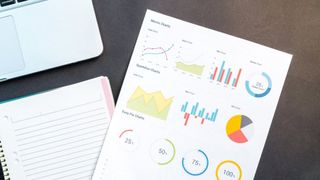In today's digital age, data is vital. It drives innovation, growth, and decision-making. But data alone is not enough.
We need to make sense of it, to find the hidden patterns, trends, and insights that can help us understand the world better. That is where data visualization comes in - the representation of data through use of common graphics, such as charts, plots, infographics, and even animations. These visual displays of information communicate complex data relationships and data-driven insights in a way that is easy to understand.

However, AI has dramatically enhanced how we can visualize data. Not only can it help to identify rich insights, but it can also do so quickly, acting as a partner and copilot for data scientists. Broadly speaking, AI tools have the potential to revolutionize the way we approach many workflows, not least in empowering us all to work more effectively.
In fact, 70% of early Microsoft Copilot users reported increased productivity . For data scientists, this increased productivity has the potential to radically rethink how data is processed, visualized, and leveraged to inform strategic decision making. With that in mind, let’s explore some of the ways we can use AI to supercharge data visualization, what you need to bear in mind for your business, and quickly look ahead to what the future of data science might look like for enterprises in the UK.
Director of Azure Business Group, Microsoft UK. Data visualization was once reserved for experts a.
















